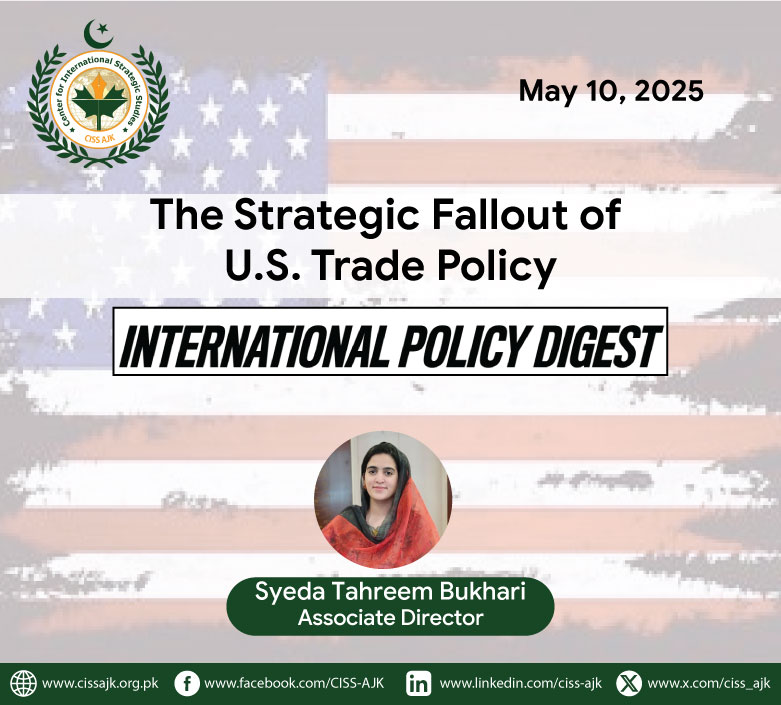Trump’s aggressive tariff policies have alienated U.S. allies, destabilized global trade relations, and inadvertently strengthened China’s strategic influence.
In a misguided attempt to address the U.S. trade deficit, President Donald Trump enacted some of the most protectionist trade policies in modern American history—imposing a blanket 10% baseline tariff on global imports and an aggressive 57-country reciprocal tariff aimed at what he deemed the “worst offenders.” China, the principal target, was hit with a staggering 145% tariff. In retaliation, Beijing slapped an 125% tariff on U.S. goods.
But the tariffs did not stop at strategic competitors. Allies—including Europe, Australia, Japan, Brazil, India, and South Korea—found themselves swept up in the administration’s trade dragnet. Only Mexico and Canada were spared from the baseline tariffs, though they remained burdened by a lingering 25% levy on aluminum and steel—damaging to their automotive industries.
Trump’s sweeping tariff regime echoed the doctrine of Lord Palmerston: in international relations, nations have no permanent allies or enemies, only permanent interests. By targeting friends and foes alike, the administration sent a clear message—U.S. trade policy under Trump would be unpredictable, transactional, and self-serving. Although reciprocal tariffs were temporarily suspended for 90 days, the baseline tariffs remain. The result: a global atmosphere of mistrust and the specter of a trade war, as countries reevaluate their economic dependence on the United States.
Strategically, the core of the policy aimed to isolate China. Far from receiving a reprieve, Beijing saw its tariff rate spike to an unprecedented 145%, prompting China to closely mirror the increase on U.S. exports. Meanwhile, America’s long-standing allies—countries that had historically aligned with Washington to limit China’s access to critical technologies and investment—began questioning their loyalties. Japan, Australia, South Korea, and the European Union, once steadfast in their strategic alignment with the U.S., now find themselves reconsidering their positions.
In a remarkable shift, the long-frozen trilateral trade talks between China, Japan, and South Korea were suddenly revived. Meeting in Seoul, their trade ministers discussed ways to deepen cooperation—signaling a desire to jointly respond to Washington’s economic coercion. While these nations have long harbored disputes rooted in history and territory, Trump’s tariffs served as a unifying threat. Their renewed diplomatic momentum suggests that shared apprehensions about U.S. policy may be more powerful than their longstanding divisions. A regional free trade agreement, once unthinkable, now seems plausible as a shield against American economic unpredictability.
The implications for global trade diplomacy are significant. Countries are increasingly looking inward—or toward one another. The European Union and China have accelerated their discussions on deepening economic cooperation. Traditional U.S. allies, long reliant on Washington as an economic bedrock, are now hedging—diversifying their markets and exploring regional partnerships. For many, China is no longer merely a rival; it’s emerging as a credible alternative.
Australia—a linchpin of U.S. strategy in the Indo-Pacific—was not spared either, despite its free trade agreement with the U.S. Legislators in Canberra criticized the tariffs as an affront, calling into question America’s reliability as a long-term partner. Although Australia initially sought a bilateral workaround, the deeper concern lies in collateral damage. With China as its largest trading partner, any prolonged U.S.-China trade war would have ripple effects across the Australian economy.
Beijing, sensing an opening, offered to deepen trade ties with Australia. While Canberra declined—citing its security dependency on the U.S.—it also pledged to broaden its economic footprint by enhancing trade with the EU, Britain, India, Indonesia, and the Middle East. Australia’s predicament reflects a broader dilemma: balancing security commitments to Washington with the economic reality of China’s market dominance. With only 15% of Australia’s export value heading to the U.S. compared to its trade with China, its entanglement with both powers is increasingly unsustainable. Even massive initiatives like the AUKUS nuclear submarine pact are now under scrutiny in the wake of the tariff chaos—raising questions about other security frameworks like the Quad.
Across Europe and Asia, the political reverberations of Trump’s tariffs are increasingly being felt in defense circles. The uncertainty has led some U.S. allies to reassess their strategic dependence on Washington. If the economic partnership with the U.S. becomes volatile and costly, reliance on its security umbrella starts to look more precarious. In this shifting terrain, defense exporters like South Korea—now among the world’s top ten—stand to gain. France and Germany, too, may find new opportunities as preferred defense suppliers.
South Asia is not immune. China could leverage the growing vacuum to deepen its military and economic reach in the region, limiting India’s strategic options. To manage the uncertainty, mid-tier U.S. allies may increasingly band together, building multilateral frameworks that reduce their overreliance on Washington. Even if formal alliances endure, they are likely to rest on shakier ground, as partner nations grow skeptical of future American constancy.
Trump’s trade belligerence has handed China a powerful narrative victory. Beijing has long cast the U.S. as a self-interested, erratic power—and Washington’s aggressive economic posturing has played into that narrative. In alienating its allies, the U.S. risks ceding influence to its chief rival. Far from weakening China’s position, the policy may be catalyzing a new global alignment—one that tilts away from Washington and toward Beijing.
If trade was once the cornerstone of U.S. global leadership, it may now be the wedge that fractures it.



